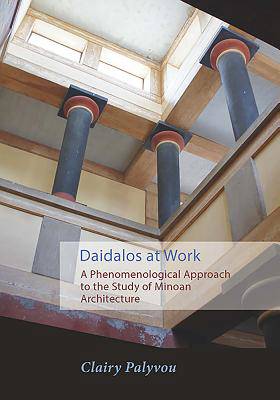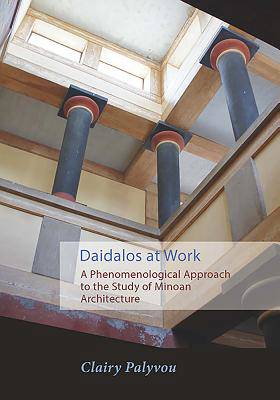
- Retrait gratuit dans votre magasin Club
- 7.000.000 titres dans notre catalogue
- Payer en toute sécurité
- Toujours un magasin près de chez vous
- Retrait gratuit dans votre magasin Club
- 7.000.000 titres dans notre catalogue
- Payer en toute sécurité
- Toujours un magasin près de chez vous
Daidalos at Work
A Phenomenological Approach to the Study of Minoan Architecture
Clairy Palyvou
Livre broché | Anglais
64,45 €
+ 128 points
Description
This is primarily a book on architecture, and as such it seeks to bring forward the deeper forces that guide the work of all the sons and all the daughters of Daidalos. Architecture is the protagonist, whereas the prehistoric time of this architecture is as important as any other historical time. This book is firmly based on the realities of a long-silenced world available to us today through the agency of archaeology. In that sense, it addresses archaeologists, architectural historians, and architects alike, in the hope that it will prove useful to those interested in understanding the Minoan world through its architecture as much as those interested in exploring architecture through the Minoan paradigm. This dual goal emanates from my deep belief in the timeless and universal values of architecture. As a teacher of (history of) architecture, the challenge has been to bring history into the studios where future architecture is formulated, to engage history in the discourse on current architectural ethos and practices, and to show that an analytical and critical approach to the past is a potent tool for advancing architectural awareness and educating future architects. I am equally confident that such an approach will return its benefits back to history, for it will provide new tools of thought and methods of interpretation of the relics of the past. Having set the scope of this book, it is only fair to add what is not included in its goals: the reader will not find a descriptive account of Minoan buildings and sites nor a list of the major architectural achievements in chronological order. This is due not only to the enormous amount of relevant information that has been accumulated to date, but also to an altogether different interest in the subject, as described above. Time, however, is crucial: "We have a mental need to grasp that we are rooted in the continuity of time, and in the man-made world it is the task of architecture to facilitate this experience" (Pallasmaa 2005b, 32). Time-related issues, therefore, such as permanence and change or tradition and innovation, will concern us.
Spécifications
Parties prenantes
- Auteur(s) :
- Editeur:
Contenu
- Nombre de pages :
- 288
- Langue:
- Anglais
Caractéristiques
- EAN:
- 9781931534949
- Date de parution :
- 30-06-18
- Format:
- Livre broché
- Format numérique:
- Trade paperback (VS)
- Dimensions :
- 175 mm x 254 mm
- Poids :
- 793 g







